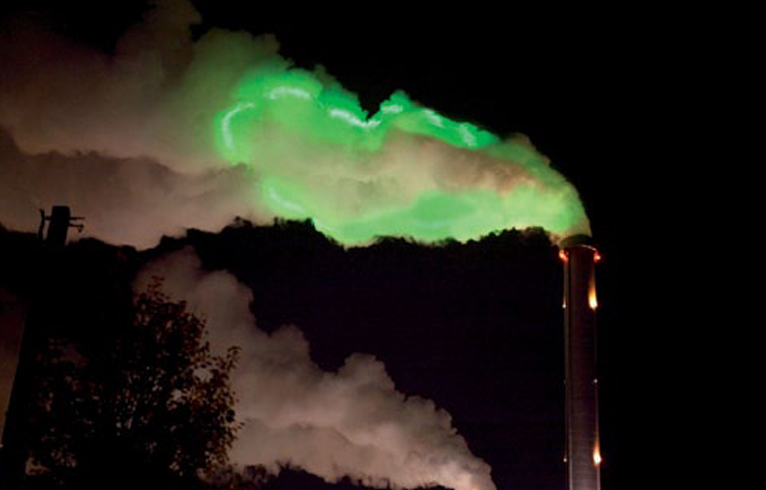TRANSLIFE: INTERNATIONAL TRIENNIAL OF NEW MEDIA ART 2011
| December 16, 2011 | Post In LEAP 11

In the short period of time from 2008’s “Synthetic Times” exhibition to the recently opened “Translife” exhibition, the “International Triennial of New Media Art” has done much to reinvigorate the National Art Museum of China. “Translife” is divided into three sections: “Sensorium of the Extraordinary,” which investigates the human senses; “Sublime of the Liminal,” which investigates artificial life; and the “Zone of the Impending,” which examines the ecological environment. The highlight of this exhibition is the use of art to fuse the technology of different fields with different philosophical, ecological, and sociological narratives, or to enable the audience to emotionally and intuitively experience new developments in, and the emergence of new thinking about, “life” in today’s world. The most distinctive feature of the show, meanwhile, is its inclusion of a wide variety of artists from different fields and backgrounds.
The three themed exhibitions revolve around questions concerning life and ecology in the context of new technology. They cover the distance from feelings of recent personal experience, ambiguous areas of artificial life, and finally, extend to the exploration of ecological questions regarding people and the environment. The Lithuanian artist Zane Berzina’s work E-Static Shadows utilized architecture, textile technology, materials science, electronic technology and art and design methods to express the natural phenomenon of human static electricity in the form of light and shadow on an electronic textile membrane, thus conveying the poetry of static electricity through interaction with the audience.
In French artist Gregory Lasserre and Anais met den Ancxt’s collaborative piece Contact, the audience created music through physical contact with glowing balls. The distance between unfamiliar people is rendered technologically visible, then experienced by the senses, effectively enabling “cold” technology to produce “human warmth.” In the “Sublime of the Liminal” section, we see the challenges to the understanding of life that biological science and human cloning have already presented to humanity. British artist Guto Nobrega’s work Breathing presents the audience with a flowerpot and a hanging basket of artificial, hybrid life forms that move or emit light when the audience, by breathing, communicates with them.
The work, itself situated between life and non-life, explores the indistinct boundaries between life and non-life through this interaction. Eduardo Kac utilized transgenic technology to combine his genes with those of a morning glory to create a new species. In the colorful petals of this new species of plant flow the artist’s genes. In its deeply colored veins, the artist is thus represented as the symbol of humanity.
In the “Zone of the Impending” section of the exhibition, the works Greenhouse Converter and Autoinducer_ph-1 present a strategic recommendation for harmonious development with the ecological environment through the establishment of a mutually beneficial system for coexistence among plants.
Some works may have proven a bit too abstract for the general audience, such as Neurotica Collective and Steve Potter Lab’s collaborative work Silent Barrage, which displays robots in giant petri dishes. Understandably, it left the audience somewhat confused, given that most people are unfamiliar with neural robots and in-vitro cultured neurons. But otherwise, the works in this exhibition allow us to see the infinite possibilities for artistic expression that new technology holds. In contemplating humanity, other organisms and the environment, what we see is a combination of art and technology engaging in a new consideration for and interpretation of the rights of all living things.
Li Xiaonan (Translated by Jason Fitts)


